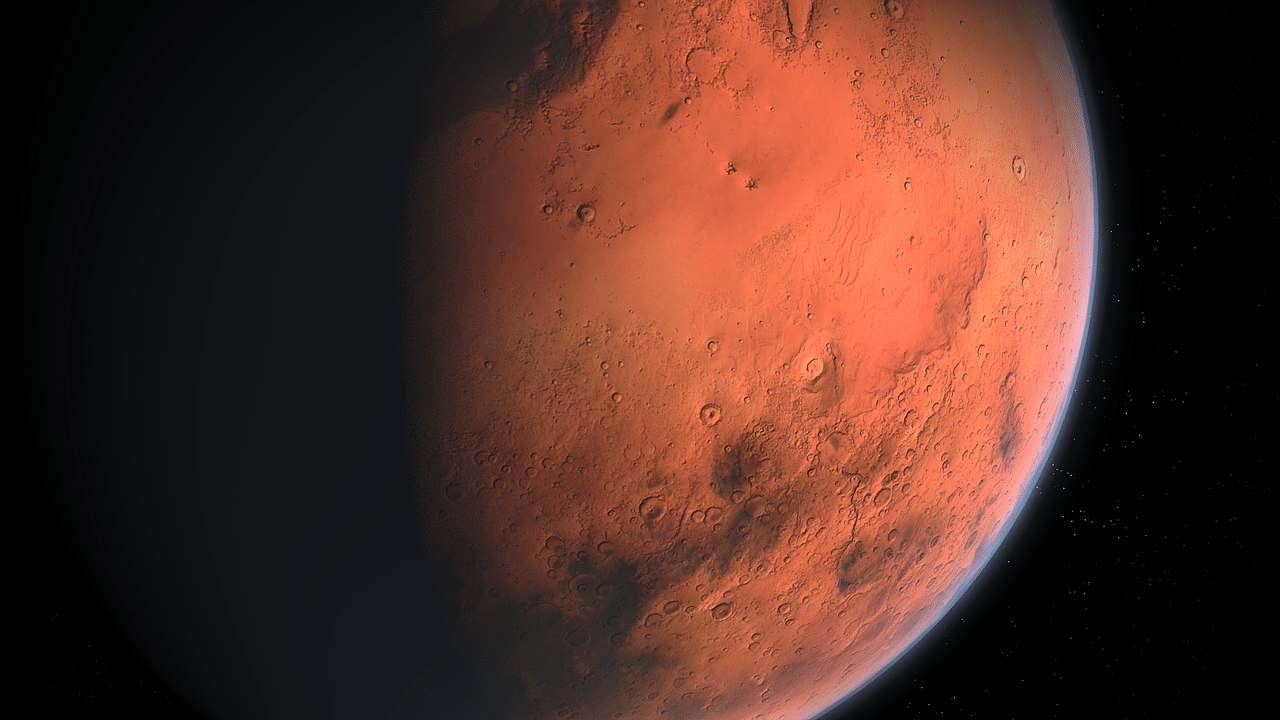
How did Mars lose its atmosphere? Indian scientists now offer an answer to this long standing query ahead of NASA’s Perseverance spacecraft’s scheduled touch-down on the Red Planet to study its left-over atmosphere and look for the signatures of primordial life probably lurking under the surface.
Using sophisticated computer modelling, two physicists at the Indian Institute of Science, Education and Research, (IISER) Kolkata found how Mars, which once used to have a warm and thick atmosphere similar to earth, lost it.
Nearly 1-1.5 billion years ago, the Red Planet lost its magnetosphere – a space around the planet dominated by the planet’s own magnetic field – that acts as an umbrella. While there are theories on what led to such a loss, the consequences were catastrophic.
Devoid of the protective shield, the rocky planet was exposed to harsh and forceful solar winds, which blew the Martian atmosphere away. "Our simulations physically establish what has been suspected for a long time - loss of the Martian magnetosphere has led to the loss of the Martian atmosphere - rendering at least it's surface inhospitable for life!" IISER physicist Dibyendu Nandy told DH.
The magnetosphere was chipped away because the planet’s internal dynamo that generated the magnetic field stopped functioning. What led the dynamo to stop in the first place is not understood well, but the commonest theory is due to the solidification of the core. The Indian findings coincide with the three new Mars missions that seek to explore several new facets of the Earth’s closest planetary neighbour.
While NASA’s Perseverance undoubtedly is the world’s most advanced astrobiology mission which would try out several new technologies, China's Tianwen mission and the UAE's Hope Mars mission – both reached the Martian orbit – would also study Mars to understand the Martian space and near-surface environment, explore habitability and look for evidence to figure out how Mars lost its atmosphere.
In their simulations, Nandy and his colleague Arnab Basak explored for the first time how the plasma winds of a star like the Sun interacts with a Mars-like planet under two conditions: (1) With an intrinsic magnetic field (magnetosphere) which Earth has and which Mars also had but lost and (2) with no intrinsic magnetic field (the present Mars).
The planet was exposed to the highly active young Sun that hosted more frequent magnetic storms and released stronger plasma winds. The heavy bombardment of solar wind particles stripped away from a significant portion of the Martian atmosphere, they reported in the Monthly Notice of the Royal Astronomical Society.
“Our simulations are found to be in good agreement with observational data from Mars Global Surveyor and Mars Atmosphere and Volatile EvolutioN missions (MAVEN) and is expected to complement observations from the Emirates (Hope) Mars Mission, China’s Tianwen-1 and NASA’s Mars 2020 Perseverance mission,” the IISER team added.
